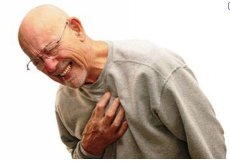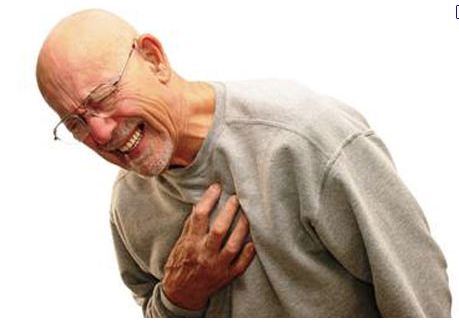Medical expert of the article
New publications
Chest pain
Last reviewed: 04.07.2025

All iLive content is medically reviewed or fact checked to ensure as much factual accuracy as possible.
We have strict sourcing guidelines and only link to reputable media sites, academic research institutions and, whenever possible, medically peer reviewed studies. Note that the numbers in parentheses ([1], [2], etc.) are clickable links to these studies.
If you feel that any of our content is inaccurate, out-of-date, or otherwise questionable, please select it and press Ctrl + Enter.

Retrosternal pain is a complaint that doctors often hear, especially emergency doctors. Diagnosis of these pains is quite difficult, because they can be either direct pain or radiating pain – radiating to the chest from other organs.

Why is chest pain difficult to diagnose?
- If chest pain is localized in the upper chest or abdomen, it may be a cardiovascular disease.
- If the pain behind the breastbone is associated with internal organs, it can radiate to both the chest and the abdominal cavity.
- A person can describe pain in his own way, that is, perceive it individually, and by these signs it is very difficult to recognize the real cause of pain.
- Anamnesis is of great importance in determining the cause of chest pain - and its thorough implementation requires maximum interaction between the doctor and the patient, as well as high qualifications of the doctor
- The patient's physical findings are very important in determining the cause of chest pain, but additional tests will also be needed.
What causes chest pain?
In case of acute chest pain, the doctor may suggest the following causes that threaten a person's life. Among the most common diseases that cause chest pain are the following:
- acute myocardial infarction
- unstable angina
- pulmonary embolism
- esophageal rupture
- aortic dissection
- spontaneous pneumothorax
If all these diseases are excluded (and all of them are life-threatening), then the person needs additional diagnostic examinations. They are carried out in the clinic, and in case of acute pain – observation in the hospital.
What types of chest pain are there?
The pain can be cutting, sharp, piercing - such pain can be of musculoskeletal origin. In this case, doctors can diagnose pleurisy in 74% of patients. Of all patients, 14% of chest pains can be non-pleuritic in nature.
Symptoms of pain in various diseases are also difficult to diagnose because they may not be entirely characteristic of a particular disease. For example, chest pain in patients with a heart attack may be perceived as burning, although sometimes it manifests itself as pressing. And vice versa, with a stomach disease, the pain may be burning, but it is perceived as pain due to a heart attack.
Where can chest pain radiate?
Pain in angina pectoris is almost always accompanied by a retrosternal component, as in other causes of pain caused by diseases of internal organs. Such pains can be given to completely different places, not those from which the source of pain itself comes. Angina pectoris usually gives pains that radiate to the shoulder, neck, inner part of the arms (or only the left arm).
Patients who complain of aortic dissection radiate to the upper abdomen and back. This depends on how much the aorta has dissected.
When a patient has gastroreflux disease, in other words, esophageal reflux, the pain rarely radiates to another area, but such cases do occur. In 20% of cases, the pain can radiate to the back, sometimes to the arms and shoulders (when the pain is especially pronounced and the disease is in an acute stage).
When does chest pain start and how long does it last?
The chest pains that occur due to angina pectoris (angina) last much less than the pains of a heart attack. Their duration is from 5 to 15 minutes, and in case of a heart attack, the pains are not limited to this time. The pains of angina pectoris go away after taking nitroglycerin, and it is very important to lie still, not move or be active.
If angina is unstable, chest pain may not go away within 15 minutes. Chest pain may continue even at rest and does not go away after nitroglycerin.
And with variant angina, chest pain can occur even at night, not to mention at rest. Nitroglycerin can help this pain subside. Those with variant angina can even engage in moderate physical activity.
Pain during a heart attack increases and does not go away after half an hour. Chest pain during cardiac ischemia can gradually increase, then reach a peak, and then the person cannot stand it and calls an ambulance. Chest pain due to aortic dissection or pulmonary thrombophlebia can be intense at first, and then gradually subside.
Pain in food diseases can manifest itself as burning, or it hurts in the throat when swallowing, or spasms. Heartburn most often manifests itself a quarter of an hour to an hour after eating, especially if it was a rich dish and fatty, too. Heartburn can be activated in certain positions. For example, when a person bends over or lies on his left side or back.
Substernal pain in the esophagus is called odynophygia if this pain occurs during the passage of a bolus of food through the esophagus. The nature of this pain may be burning, because the food irritates the mucous membrane of the esophagus. The pain may be short-lived, but quite sharp, especially if the food passes through the narrowest part of the esophagus.
If the esophagus is in spasm, the pain may be dull and localized in the very center of the chest. The duration of this pain can vary from a couple of excruciating seconds to 10 minutes.
Due to similar symptoms, pain in the esophagus and pain in the heart are very difficult to distinguish. In addition, the diseases can be combined. Statistics say that almost a third of patients with myocardial infarction or unstable angina can also complain of pain due to heartburn. Such chest pain can cut a person for several hours, although its minimum duration is a few seconds. In addition, chest pain manifests itself when palpating different areas of the chest.
What prevents accurate diagnosis of chest pain?
Special schemes for determining the causes of chest pain have long been developed. But there are additional circumstances that can interfere with accurate diagnosis.
Diagnostics, which concerns examination of patients with acute myocardial infarction, is complicated by the fact that doctors do not take into account other causes of chest pain, except for myocardial infarction. But the cause may also be pain in the gastrointestinal tract, which remains unrecognized.
The probability of diagnosing a particular disease is very difficult to apply to a patient with certain characteristics.
Not every diagnostic can reveal all the symptoms of diseases, because each patient is individual.
Diagnostics of chest pain
In the emergency department, the typical approach to chest pain involves diagnosing the most dangerous causes: infarction, pulmonary embolism, aortic dissection, esophageal rupture, pneumothorax, and cardiac tamponade. Often, the real cause of chest pain is not so easy to find.
If a person is suspected of having acute coronary syndrome ("unstable angina"), many doctors will take a history, then an ECG, then a cardiac enzyme test. In some cases, only a comprehensive diagnosis can determine the cause.
As with all conditions in which chest pain is the primary symptom, a thorough history and physical examination will help. Rapid diagnosis can be life-saving and can often be done without the need for x-rays or blood tests (for example, in aortic dissection). But in general, additional testing is often needed to establish a diagnosis.
When determining the causes of chest pain, the doctor pays attention to recent changes in health, family history (with premature atherosclerosis, high cholesterol), smoking, diabetes and other risk factors.
 [ 1 ], [ 2 ], [ 3 ], [ 4 ], [ 5 ], [ 6 ], [ 7 ], [ 8 ]
[ 1 ], [ 2 ], [ 3 ], [ 4 ], [ 5 ], [ 6 ], [ 7 ], [ 8 ]
The following diagnostic methods are used to determine chest pain:
- X-ray examination of the chest and/or abdomen
- CT scanning can be a very good method, but it is not always available (for example, in a local clinic).
- Electrocardiogram (ECG)
- CT angiography of the pulmonary arteries (if pulmonary embolism is suspected)
- Blood tests:
- Clinical blood test
- Electrolyte and kidney function test (creatinine)
- Liver enzymes
- Serum lipase to rule out acute pancreatitis
Chest pain can be a sign of serious diseases that require careful examination and treatment, so this symptom cannot be ignored.

